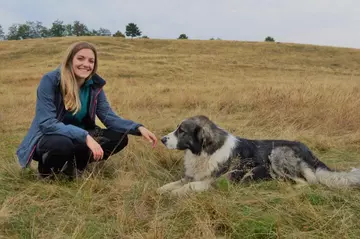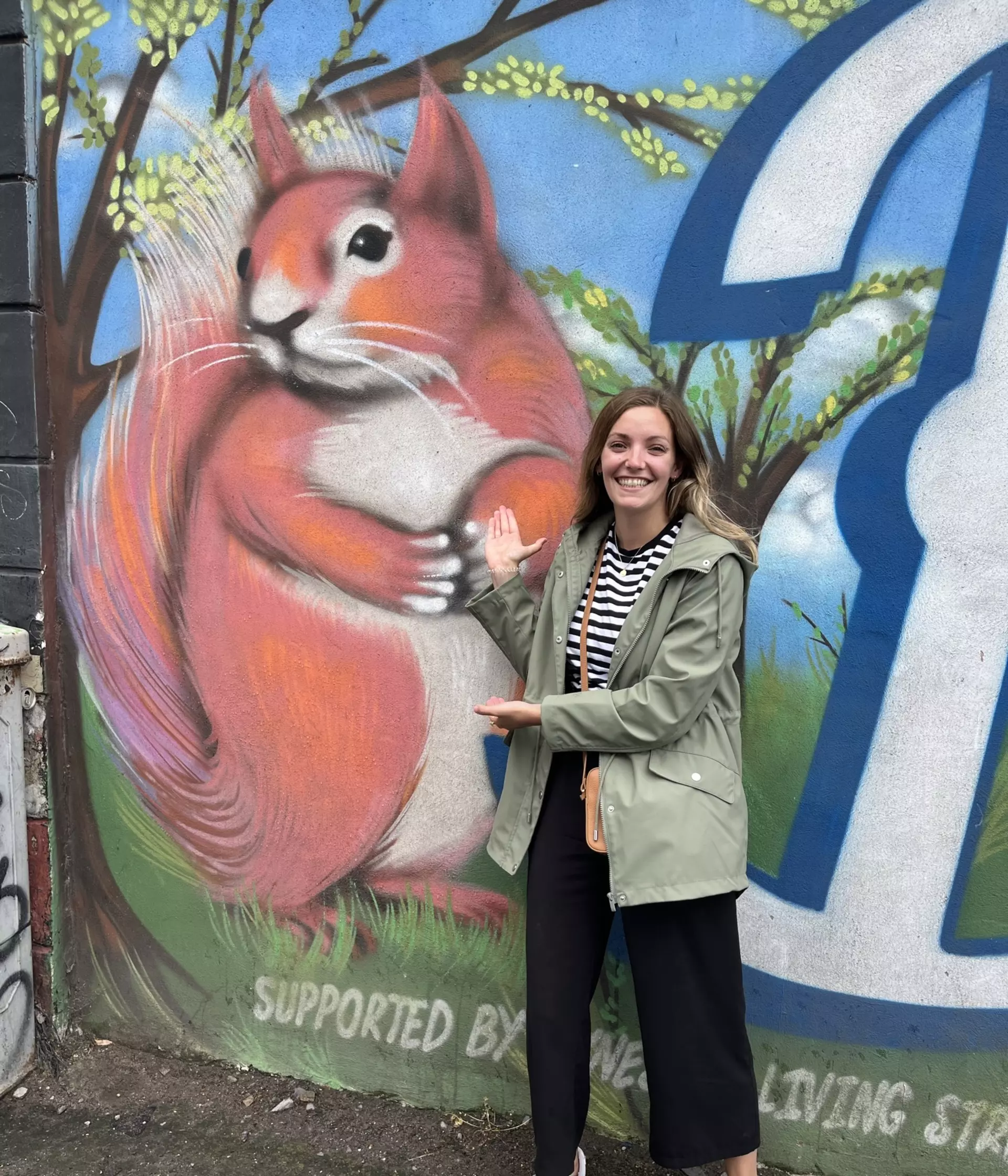
Human-wildlife interactions
Camera trapping
Decision science
Institute of Zoology
Zoological Society of London
London
NW1 4RY
Beth’s research focuses on the use of decision science to aid small population recovery, and non-invasive monitoring to facilitate coexistence between people and wildlife.
Currently, Beth is employing structured decision-making (SDM) to help develop a national recovery strategy for red squirrels in England. Red squirrels are an Endangered native species in England that face multiple threats including competition with grey squirrels, the squirrelpox virus transmitted by grey squirrels, other infectious diseases, and habitat loss and fragmentation. Conservation actions are varied with some, primarily grey squirrel management, being less palatable to regional and national communities. Making decisions about how best to conserve red squirrels is, therefore, a complex task. The SDM approach being applied to this situation is used to methodically think through difficult decisions and allows for decisions to be informed by scientific evidence alongside the values and risk attitudes of the people involved. This research is funded by Natural England and conducted in collaboration with the UK Squirrel Accord.

Beth is also interested in the use of non-invasive methods to monitor wildlife and how these tools can be used to facilitate coexistence between people and wildlife. For her PhD, Beth studied the interactions between livestock guarding dogs and wildlife in the Romanian Carpathian Mountains through interviews with shepherds, scat analyses, GPS tracking, and camera trapping. Prior to this she conducted her master’s research on 1) using camera traps to study the responses of brown bears to human disturbance in Croatia, and 2) developing an eDNA assay to detect water vole and American mink presence in water samples.
Beth also conducts research within an independent group called the Bioacoustics Research Group. This groups focuses on passive acoustic monitoring and acoustic localisation of wildlife including wolves, coyotes, golden jackals, Cao vit gibbons, and tigers.

Education
2020-2024: PhD – “Interactions between livestock guarding dogs and wildlife in the Carpathian Mountains, Romania”, Nottingham Trent University
2017-2018: MRes Ecology, Evolution & Conservation, Imperial College London
2013-2016: BA Natural Sciences (Zoology), University of Cambridge
Previous roles
2019-2023: Student Officer, Mammal Society
2018-2019: Data & Information Officer, Mammal Society
2017-2018: Research Assistant, Ives Lab, University of Wisconsin-Madison
2015-2016: Field Assistant, Ecosystems and Global Change Group, University of Cambridge
Books:
Crawley, D., Coomber, F., Kubasiewicz, L., Harrower, C., Evans, P., Waggitt, J., Smith, B.R. & Matthews, F. eds. (2020). Atlas of the Mammals of Great Britain and Northern Ireland. Pelagic Publishing Ltd.
Research articles:
Root-Gutteridge, H., Smith, B.R., Butkiewicz, H., Fontaine, A.C., Kershenbaum, A., Owens, J.L., Schindler, L. & Dassow, A. (2024). Not afraid of the big bad wolf: calls from large predators do not silence mesopredators. Wildlife Biology. Issue pending. http://onlinelibrary.wiley.com/doi/10.1002/wlb3.01226/abstract
Rigoudy, N. et al. (2023). The DeepFaune initiative: a collaborative effort towards the automatic identification of European fauna in camera trap images. European Journal of Wildlife Research, 69, pp. 113. https://doi.org/10.1007/s10344-023-01742-7.
Bru, E., Smith, B.R., Butkiewicz, H., Fontaine, A.C., Dassow, A., Owens, J.L., Root-Gutteridge, H., Schindler, L. & Kershenbaum, A. (2023). Combining acoustic multilateration and high-resolution land cover maps to study predator vocalisation behaviour. Wildlife Research, 50(12), pp. 965-979. https://doi.org/10.1071/WR22007.
Smith, B.R., Root-Gutteridge, H., Butkiewicz, H., Dassow, A., Fontaine, A., Markham, A., Owens, J., Schindler, L., Wijers, M. & Kershenbaum, A. (2021). Acoustic localisation of wildlife with low-cost equipment: lower sensitivity, but no loss of precision. Wildlife Research, 49(4), pp. 372-381. https://doi.org/10.1071/WR21089
Coomber, F.G., Smith, B.R., August, T.A., Harrower, C.A, Powney, G.D. & Mathews, F. (2021). Using biological records to infer long-term occupancy trends of mammals in the UK. Biological Conservation, 264, p. 109362. https://doi.org/10.1016/j.biocon.2021.109362
Smith, B.R., Yarnell, R.W., Uzal, A. & Whitehouse-Tedd, K. (2020). The ecological effects of livestock guarding dogs (LGDs) on target and non-target wildlife. Journal of Vertebrate Biology, 69(3), pp. 1-17. https://doi.org/10.25225/jvb.20103
Mathews, F., Smith, B.R., Harrower, C.A., Coomber, F.G., in association with the Wales Mammal Biodiversity Action Forum (2020). The State of Mammals in Wales. A report by the Mammal Society for Natural Resources Wales, produced in association with Wales Mammal Biodiversity Action Forum. The Mammal Society, London. ISBN: 978-0-9935673-6-0.
Finch, D., Smith, B.R., Marshall, C., Coomber, F.G., Kubasiewicz, L.M., Anderson, M., Wright, P.G. & Mathews, F. (2020). Effects of Artificial Light at Night (ALAN) on European Hedgehog Activity at Supplementary Feeding Stations. Animals, 10(5), p. 768. https://doi.org/10.3390/ani10050768
Tanentzap, A.J. & Smith, B.R. (2018). Unintentional rewilding: lessons for trophic rewilding from other forms of species introductions. Philosophical Transactions of the Royal Society B: Biological Sciences, 373(1761), p. 20170445. https://doi.org/10.1098/rstb.2017.0445
Smith, B.R., Aldridge, D.C. & Tanentzap, A.J. (2018). Mussels can both outweigh and interact with the effects of terrestrial to freshwater resource subsidies on littoral benthic communities. Science of the Total Environment, 622, pp. 49-56. https://doi.org/10.1016/j.scitotenv.2017.11.318
